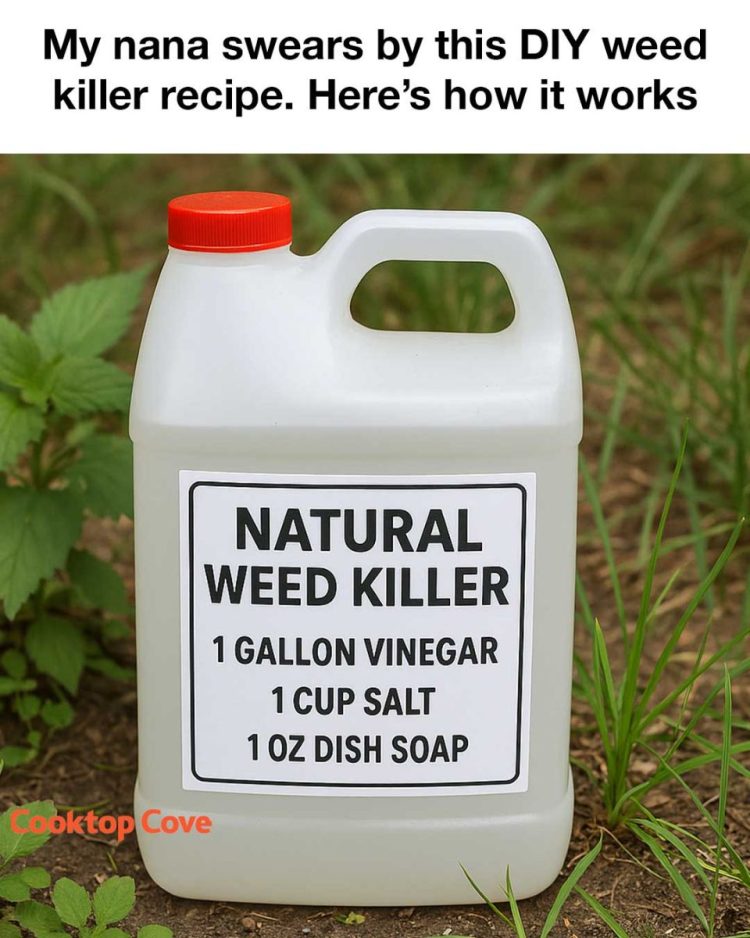In the world of gardening, weeds are the persistent nemesis that every gardener faces. While commercial weed killers are readily available, many contain harsh chemicals that can be harmful to the environment and to the plants you wish to keep. This has led many to seek out natural alternatives, and one such solution comes from the wisdom of our elders. My nana, a seasoned gardener with decades of experience, swears by her homemade weed killer recipe that is both effective and eco-friendly.
Her recipe is simple, using common household ingredients that are safe and easy to handle. This DIY weed killer not only saves money but also provides peace of mind knowing exactly what is being applied to the garden. In this article, we will explore the origins of Nana’s recipe, the science behind its ingredients, and how you can make and use it effectively in your own garden.
1. The Origins of Nana’s DIY Weed Killer
Nana’s DIY weed killer recipe has been passed down through generations, a testament to its effectiveness and simplicity. It originated from a time when commercial weed killers were either unavailable or too expensive for the average household. Instead, people relied on what they had at home, leading to the discovery of natural solutions.
The recipe consists of three main ingredients: vinegar, salt, and dish soap. Each component plays a crucial role in the mixture’s effectiveness. The proportions Nana uses are 1 gallon of white vinegar, 1 cup of salt, and 1 tablespoon of liquid dish soap. This combination has been tried and tested in her garden, proving to be a reliable method for keeping weeds at bay.
2. Understanding the Ingredients: Vinegar, Salt, and Dish Soap
The effectiveness of Nana’s weed killer lies in the synergy of its three ingredients. Vinegar, specifically white vinegar with 5% acetic acid, acts as the primary weed-killing agent. Its acidity is strong enough to damage and kill the leaves of weeds upon contact.
Salt, or sodium chloride, is added to enhance the mixture’s effectiveness. It dehydrates the plant, preventing it from absorbing water and nutrients. This makes it particularly effective on stubborn weeds that are resistant to vinegar alone.
Dish soap serves as a surfactant, helping the solution adhere to the leaves of the weeds. This ensures that the vinegar and salt can penetrate the plant’s surface more effectively, increasing the overall potency of the mixture.
3. The Science Behind Vinegar as a Weed Killer
Vinegar’s weed-killing properties are due to its acetic acid content. When applied to the leaves of a plant, the acid breaks down the cell membranes, causing the plant to dry out and die. This process is most effective on young, tender weeds, as mature plants may have more robust defenses.
Research has shown that vinegar with higher concentrations of acetic acid can be even more effective, but for home use, the standard 5% found in household vinegar is sufficient. It’s important to note that vinegar is non-selective, meaning it can harm any plant it comes into contact with, so careful application is necessary.
4. How Salt Enhances the Weed-Killing Effect
Salt works by drawing moisture out of the plant cells, leading to dehydration and eventual death. When combined with vinegar, the salt helps to ensure that the plant cannot recover from the initial acid damage.
However, caution is advised when using salt in the garden. Excessive salt can lead to soil degradation, affecting the growth of future plants. Therefore, it’s best used in areas where you do not plan to plant anything else, such as driveways or walkways.
5. The Role of Dish Soap in the Mixture
Dish soap acts as a surfactant in Nana’s weed killer recipe. Its primary role is to reduce the surface tension of the vinegar and salt solution, allowing it to spread more evenly across the leaves of the weeds.
This increased coverage ensures that the active ingredients can penetrate the plant’s defenses more effectively. The soap also helps the solution stick to the leaves, preventing it from being washed away by rain or irrigation.
6. Step-by-Step Guide to Making the Weed Killer
see continuation on next page
